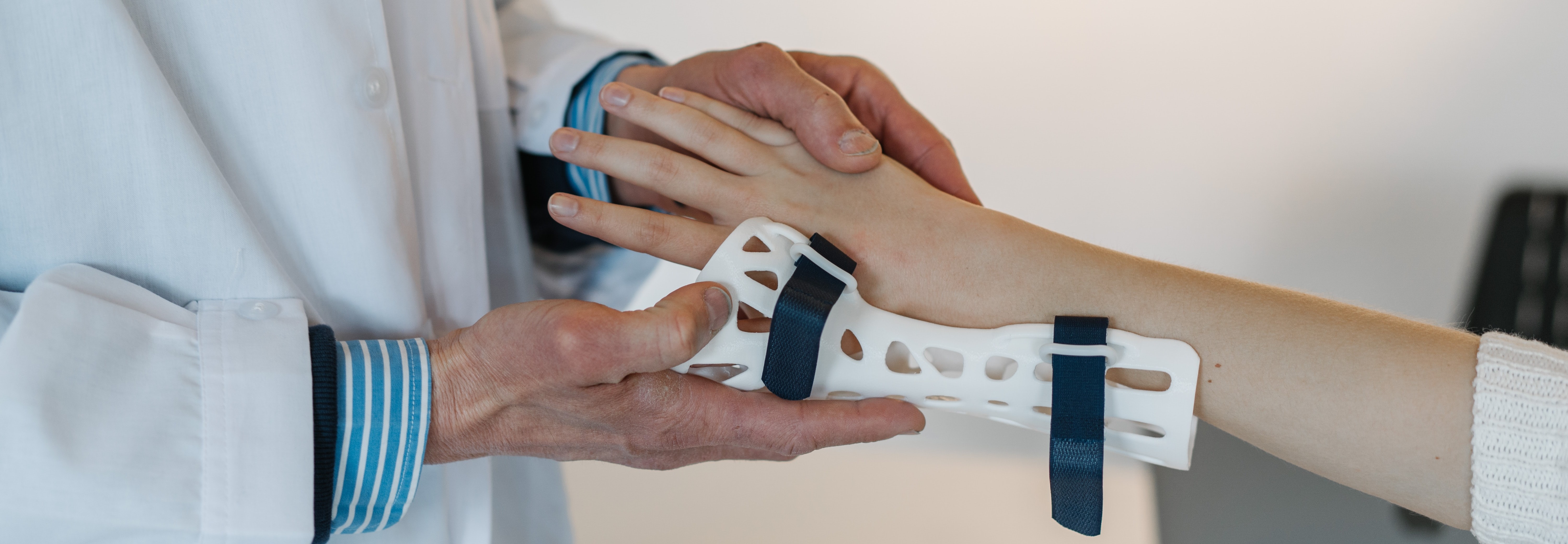3D printing is revolutionizing and enhancing various industries, and the medical industry is no exception.
3D printing is part of the innovative process called additive manufacturing. It is the production of three-dimensional solid objects from a digital file. The printer uses a layering process in which one layer is added after the other until you have a fully formed object.
In medicine and healthcare, 3D printing could not only revolutionize drug creation and the production of medical equipment, but it could also offer new methods for practicing medicine, optimizing supply chains, and proposing cheaper and way more personalized medical services.
Understanding 3D Printing
Three-dimensional (3D) printing or additive manufacturing is the process of making three-dimensional solid objects from a digital file.
A 3D printed object is created using additive processes. In an additive process, an object is created by laying down successive layers of material. Each layer is a thinly sliced cross-section of the object.
3D printing is the opposite of subtractive manufacturing which is cutting out / hollowing out a piece of metal or plastic with, for instance, a milling machine. It enables you to produce complex shapes using less material than traditional manufacturing methods.
Use of 3D Printing in Biomedical Engineering
3D printing hasn’t been around for long but has already shown tremendous potential. As printing methods and materials advance, these benefits have also applied to biomedical engineering.
Three-dimensional (3D) printing improves our ability to fabricate a variety of complex and customized biomedical products accurately, efficiently, economically, and with high reproducibility through layer-by-layer positioning of materials, biomolecules, or even living cells in the products.
Currently, 3D-printed products are being used in neuro, cardiac, orthopedic, and maxillofacial surgeries, tissue engineering, and the indirect manufacturing of medical devices.
Bone tissue reparation and 3D-printed bone implants are also a reality.
Another arena where biomedical 3D printing offers its usefulness is prosthetics. As prosthetics become more advanced technologically, you can expect to see 3D modeling, design, and printing increasingly used in medical professions.
Benefits of 3D Printing in Medicine
Additive manufacturing has already seen implementation in biomedical engineering, and it has the potential to disrupt the entire field. Here’s how.
- Hands-On Medical Training: 3D printing plays a vital role in training future doctors and preparing for actual operations. While 2D images are useful, they provide little visualization and do not represent the actual human part. 3D printing, on the other hand, provides models that look realistic and mimic actual human parts. Future doctors can practice on 3D-printed organs. Training on human-like, 3D printed parts increases the quality of skills doctors obtain during training and the medical treatment of patients. It makes the operational process more accurate and effective.
- Affordable Bionics and Prosthetics: Cutting-edge treatments and technologies are typically expensive, preventing many patients from accessing the best health care. This issue is especially poignant in prosthetics and bionics, where only 15% of American amputees can cover the cost of a prosthesis. Additive manufacturing is far faster and uses less material than traditional techniques. As a result, it can produce the same products at a fraction of the cost. Thus, the introduction of 3D printing in biomedical engineering has made bionics and prosthetics more affordable.
- 3D Mapping and Prototyping: 3D scanning technology, such as advanced CT/ MRI, can be used to make highly accurate and detailed virtual models of human organs or bones. These can then be rendered as physical prototypes or models using a 3D printer. With such a model, doctors can then study and diagnose various conditions without needing to perform dangerous or intrusive surgery. Models can help doctors plan out ideal surgical procedures in advance. It decreases the amount of time a patient is in the operating theater, thus reducing the risk and improving the chances for a positive outcome.
- 3D-Printed Organs: While most additive manufacturing applications deal with plastic filaments, that’s not all the technology can do. A subset called bioprinting prints with biomaterials like cells. This process can create artificial organs that look, feel, and behave like real ones, which could revolutionize organ transplants. Indeed, this 3D technology also showed that it is possible to print devices working exactly like our living organs. It could become a solution to face the lack of organ donors.
- 3D Printing Helps Reconstruct Bodies: Additive manufacturing is saving lives and can help with bone reconstruction. This technology helps make customized products for each patient, outside and inside their bodies. For example, additive manufacturing offers new possibilities for jaw reconstruction and knee implants. There is immense potential for 3D printing by virtue of the possibility it offers to control the chemistry, shape, porosity, and topography of the devices in bone reconstruction surgeries.
- Speed and Volume Flexibility: 3D printing is not limited by the same economies of scale that affect conventional manufacturing. There is no need to make specialized tooling, jigs, or fixtures, and there are no minimum volume requirements or batch production limitations. As long as the design is ready, a single part can be made at the touch of a button. This volume flexibility is especially desirable in emergency or remote situations where there is little or no infrastructure available to support batch orders and where a single much-needed item is a matter of life or death.
Conclusion
Additive manufacturing devices make it possible to print out any structure in 3D. 3D printed medicine, 3D printed tissues, personalized drugs, customized prosthetics, casts, and 3D printed medical devices are changing the way healthcare is delivered while massively increasing outcomes.
3D printing has already disrupted the manufacturing industry and will likely do the same to biomedical engineering. This technology is still young and has yet to see widespread adoption, but its potential is too vast to ignore. As materials become more affordable and varied and bioprinting techniques advance, medical printing will take off.

